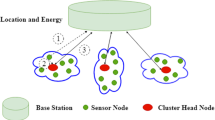Abstract
In this paper, a hybrid algorithm based on maximum spanning tree and dynamic fuzzy neural network is proposed for classification of murder cases. The proposed classification model of criminal law is useful for judges, lawyers or other people who want to determine the guilt and deliver judgment in their cases. The model is trained and tested for sufficient number of court decisions. The experimental results show that the proposed maximum spanning tree-based dynamic fuzzy supervised neural network algorithm overcomes the problem of slow convergence and large computation caused by artificial neural network and fuzzy neural network algorithms. Comparative studies were carried out for a number of different networks and configurations and reported. Simulations are presented to illustrate the performance of the proposed algorithm.








Similar content being viewed by others
Explore related subjects
Discover the latest articles, news and stories from top researchers in related subjects.References
Aizenberg I, Luchetta A, Manetti S (2012) A modified learning algorithm for the multilayer neural network with multi-valued neurons based on the complex QR decomposition. Soft Comput 16:563–575
Bruninghaus S, Ashley KD (2003) Combining case-based and model-based reasoning for predicting the outcome of legal cases. In: 5th international conference on case-based reasoning, vol 2698. Springer, Heidelberg, pp 65–79
De Paz JF, Rodriguez S, Bajo J, Corchado JM, Lopez V (2009) Self organized dynamic tree neural network. IWANN Part I, LNCS 5517:221–228
Ding S, Qi B, Jia H, Zhu H, Zhang L (2013) Research of semi-supervised spectral clustering based on constraints expansion. Neural Comput Appl 22(Suppl 1):S405–S410
Feng S, Li H, Hu D (2009) A new training algorithm for HHFNN based on Gaussian membership function for approximation. Neurocomputing 72:1631–1638
Groendijk C (1992) Neural schemata in automated judicial problem solving. In: Legal knowledge based systems JURIX 92: information technology and law. The Foundation for Legal Knowledge Systems, pp 147–158
Hollatz J (1997) A fuzzy advisory system for estimating the waiting period after traffic accidents. IEEE Fuzzy Syst 3:1475–1479
Hollatz J (1999) Analogy making in legal reasoning with neural networks and fuzzy logic. Artif Intell Law 7:289–301
Janeela Theresa MM, Joseph Raj V (2011) Analogy making in criminal law with neural network. In: Proceedings international conference on emerging trends in electrical and computer technology, ICETECT 2011. Nagercoil, India, pp 772–775
Janeela Theresa MM, Joseph Raj V (2013) Fuzzy based genetic neural networks for the classification of murder cases using trapezoidal and lagrange interpolation membership functions. Appl Soft Comput J 13(1):743–754
Leng G, Prasad G, Mc Ginnity TM (2004) An on-line algorithm for creating self-organizing fuzzy neural networks. Neural Netw 17:1477–1493
Leng G, McGinnity TM, Prasad G (2006) Design for self-organizing fuzzy Neural networks based on genetic algorithms. IEEE Trans Fuzzy Syst 14(7):755–766
Li D-C, Wu C, Chang FM (2005) Using data-fuzzification technology in small data set learning to improve FMS scheduling accuracy. Int J Adv Manuf Technol 27:321–328
MM Janeela Theresa, V Joseph Raj (2013) Modified fuzzy neural network for the classification of murder cases in criminal law using Gaussian membership function. Int J Comput Intell Appl 12(2):1350011-1-1350011-15
Pettie S, Ramachandran V (2002) An optimal minimum spanning tree algorithm. J ACM 49(1):16–34
Philipps L, Sartor G (1999) Introduction: from legal theories to neural networks and fuzzy reasoning. Artif Intell Law 7:115–128
Quek C, Pasquier M, Lim BBS (2006) POP-TRAFFIC: a novel fuzzy neural approach to road traffic analysis and prediction. IEEE Trans Intell Transp Syst 7(2):133–146
S Belanger, M-A Thibodeau, E Aïmeur (1999) Training of the learner in criminal law by case-based reasoning. In: Multiple approaches to intelligent systems, IEA/AIE-99, LNAI 1611, vol 1611, pp. 398–408
Song Q, Ni J, Wang G (2013) A fast clustering-based feature subset selection algorithm for high dimensional Data. IEEE Trans Knowl Data Eng 25(1):1–14
Thammaboosadee S, Silparcha U (2008) A framework for criminal judicial reasoning system using data mining techniques. The 2008 second IEEE international conference on digital ecosystems and technologies (IEEE-DEST 2008). Phisanulok, Thailand, pp 700–705
Wang X, Wang X, Wilkes DM (2009) A divide-and-conquer approach for minimum Spanning tree-based clustering. IEEE Trans Knowl Data Eng 21(8):945–958
Wu BY, Chao K-M (2004) Spanning trees and optimization problems. Chapman & Hall/CRC Press, USA
Zeleznikow J, Stranieri A (1995) The split-up system: integrating neural networks and rule-based reasoning in the legal domain. ICAIL 1995:185–194
Zhang XM, Chen YQ, Ansari N, Shi YQ (2004) Mini-max initialization for function approximation. Neurocomputing 57(1):389–409
Author information
Authors and Affiliations
Corresponding author
Additional information
Communicated by V. Loia.
Rights and permissions
About this article
Cite this article
Janeela Theresa, M.M., Joseph Raj, V. A maximum spanning tree-based dynamic fuzzy supervised neural network architecture for classification of murder cases. Soft Comput 20, 2353–2365 (2016). https://doi.org/10.1007/s00500-015-1645-1
Published:
Issue Date:
DOI: https://doi.org/10.1007/s00500-015-1645-1




